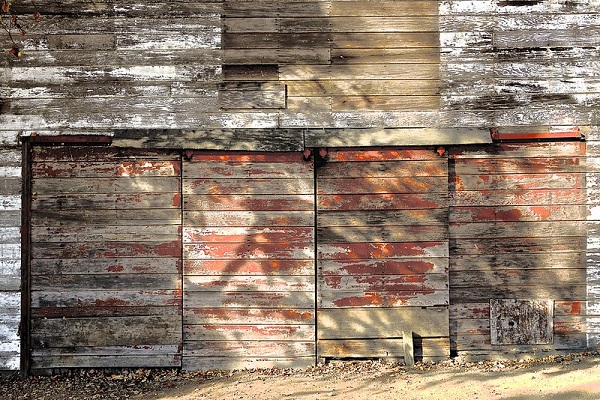
Getting into abstract photography is one way to expand your photography skills. It’s a great way to elevate your photos, turning them into beautiful art pieces. Abstract photography refers to the type of photography that does not have any identifiable subjects. It consists of an arrangement of different elements that convey a mood, feeling, or expression.
Like an abstract painting, abstract photography uses the visual language of texture, form, shapes, and color to create a composition. Capturing abstract images requires a little bit of practice and experimentation. To help you with this, check out this guide to creating abstract photos.
Composition
Composition is one of the best tools for capturing abstract images. Since abstract photos do not have any subject to focus on, the arrangement of colors and shapes should be the highlight.
When capturing abstract images, pay close attention to the picture’s objects and lines. Are they well-balanced? Do they look dull? Try to rearrange the objects in the frame or shift the positioning of your camera to capture a different perspective and come up with an interesting abstract image.
Close-up Look
Sometimes, in order to find interesting subject matter for abstract photography, you may need to look closely. When you look closer, you could create a new set of abstract ideas that consists of interesting shapes, textures, and patterns. This will strengthen the visual impact of your abstract photos.
Try to look into the different objects you’ll come across and give them a close-up shot. You can also go outdoors and explore nature. For instance, a close-up image of the grooves of tree bark can appear like mud. Or perhaps, take a close-up photo of thick grasses that can look like a dense forest. The key is to get close enough and try to create an interesting composition out of these objects.
Invest in a macro lens. By using this lens, you’d be able to easily capture images up-close, increasing your chances of capturing abstract imagery even in the most ordinary things. But if buying a macro lens is not an option, consider removing the lens from your camera and hold it against your camera backward. This should allow you to capture close-up images that can make for an interesting abstract photo.
Context
Another way to create abstract images is to take things out of context. Remember that there’s no standard rule in abstract photography. You only need to focus on the tiny shapes, patterns, and textures instead of capturing the entire subject. For instance, instead of taking a photo of the lake, you can focus only on the water surface. In a table, try to focus on the scratches instead of capturing the table itself.
Distortion
Another way to capture abstract images is to shoot those objects that stretch, twist, or obscure a visual field. Try taking pictures of transparent objects such as glass windows, prisms, or cups. Experiment by holding these objects at different angles and capture them in varying exposures.
Reflective objects such as car mirrors, puddles, and hubcaps can also make for an interesting abstract image. You can also use makeshift lenses that can be distorted and refracted to create unique and unrecognizable images.
Motion and Blur
In photography, blurry photos are considered mistakes. But in abstract photography, these blurry images can make for a valuable stylistic technique for achieving an impressive abstract image.
Create a compelling photo by taking advantage of the “motion blur” feature in your camera. To do this, manually set the shutter speed to anything slower, such as between 1/30 and 2 seconds, then slowly move your subject or the camera when taking pictures. Doing this can transform a colorful object into a paintbrush that follows the movement of your hands.
Experiment by rotating your camera in a clockwise motion to create a swirling effect. Or better yet, move your camera towards the subject to achieve a radial, zooming-in effect. You can also experiment with the lights at night to come up with luminous and streaking effects. Test out the different types of motion and shutter speed of your camera until you come up with an interesting abstract photo.
Multiple Exposure
Sometimes, using the in-camera multiple exposure setting can lead to recognizable subjects, which may not work for abstract photography. If you wanted to create abstract shots, opt for a dark setting. Then try to shoot several times to test this setting and experiment.
One method you can try is to take one in-focus shot. Then capture two more images in varying degrees of out of focus. Sometimes, this can result in a more soft-focus look, which may not look abstract enough. So, try to zoom your way in to make the subject a bit more out of context and achieve a captivating abstract image.
Post-processing
Some people tend to dislike the idea of having “too much post-processing” on photos. In abstract photography, you can experiment with post-processing to create funky images. So once your images have been uploaded to the computer, let your imaginations go wild and see what you can create. For instance, you can soften the scenes to make them look more ethereal. Or perhaps, try to create several different versions of one image, but with varying color renditions. You could unexpectedly create an abstract photo out of this.
Conclusion
Remember that abstract photography does not need to be complicated. There are no standard rules that you need to follow. It is merely about creating art for art’s sake and being surprised by what you have captured while breaking a few photography rules. When done right, abstract photography can make for an artistic practice that gives photographers limitless creative rewards.
Experimenting with the help of this guide will not only allow you to capture beautiful abstract images, but it will also help to hone your artistic and observational skills and help you become a better photographer. So grab your camera now and make sure to keep these tips in mind.
